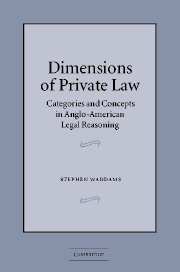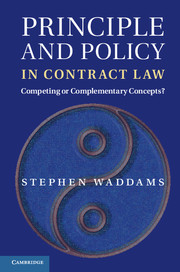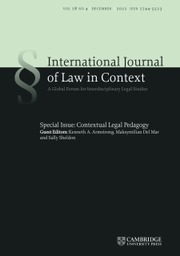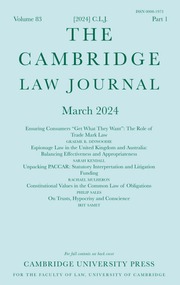Dimensions of Private Law
Anglo-American private law has been a far more complex phenomenon than has been usually recognized. Attempts to reduce it to a single explanatory principle, or to a precisely classified or categorized map, scheme, or diagram, are liable to distort the past by omitting or marginalizing material inconsistent with proposed principles or schemes. This study will be of importance to all who are interested in property, tort, contract, unjust enrichment, legal reasoning, legal method, the history of the common law, and the relation between legal theory and legal history.
- Agues that law is not better understood by concealing its inherent complexity
- A single-minded search for order and precision in law may, if pressed too far, be self-defeating and may distort an understanding of the past
- The reasons for legal decisions are often not alternative, but concurrent, cumulative, and complementary
Reviews & endorsements
'… a work of fine scholarship that demonstrates detailed knowledge of a wide range of historical sources and offers many illuminating insights.' Ken Oliphant, Cardiff University
Product details
August 2003Paperback
9780521016698
272 pages
229 × 152 × 16 mm
0.4kg
Available
Table of Contents
- 1. Introduction: the mapping of legal concepts
- 2. Johanna Wagner and the Rival Opera Houses
- 3. Economic harms
- 4. Reliance
- 5. Liability for physical harms
- 6. Profits derived from wrongs
- 7. Domestic obligations
- 8. Inter-relation of obligations
- 9. Property and obligation
- 10. Public interest and private right
- 11. Conclusion: the concept of legal mapping.









